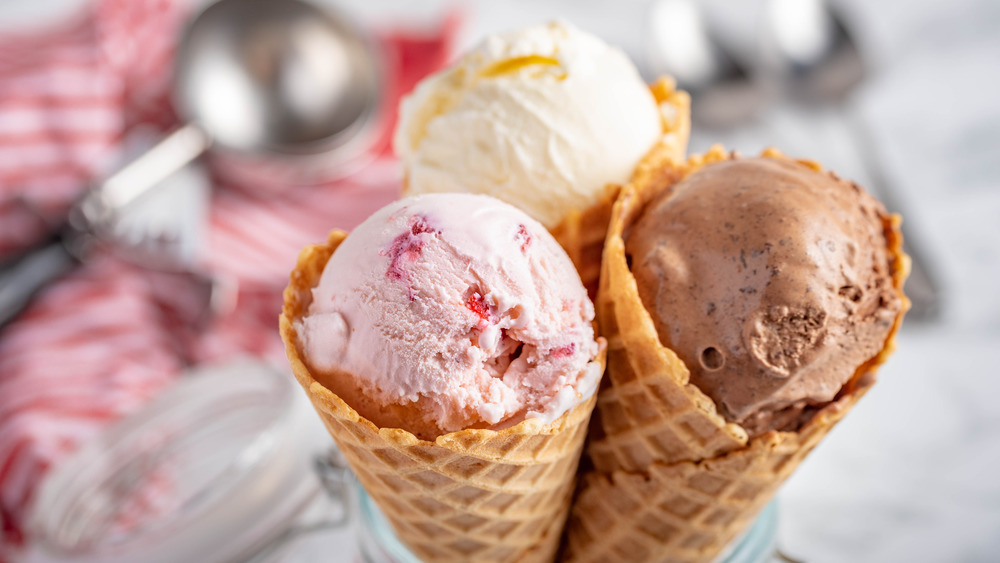The Real Difference Between Soft Serve Ice Cream And Regular Ice Cream
There are a lot of different kinds of frozen desserts out there, from gelato and frozen yogurt to popsicles and more. But you might have wondered about the difference between ice cream and soft serve ice cream — or if there really is a difference. They essentially share the same name, after all. It really all comes down to USDA regulations.
According to Spoon University, the USDA holds certain standards for ice cream. Most importantly is that ice cream must consist of 20 percent cream, 10 percent milk, and at least 10 percent fat. Premium ice cream brands like Ben & Jerry's actually use closer to 15-20 percent fat in their ice cream, which makes it creamier, richer, and incredibly delicious. Regular ice cream is also denser, and therefore more firm, because it is frozen hard. This is caused by a fourth component of the ice cream: overrun.
Overrun is the amount of air that is churned into the ice cream, which tends to make it lighter and fluffier (via Chocolate Shoppe Ice Cream). This is what cheaper brands of ice cream tend to do, because it means the product can be made for less and the brand's bottom line margin is thicker (via Slices Concession). Air is cheaper than dairy products, after all.
Soft serve has more of this in it
Soft serve ice cream came about in the 1930s. It was very popular at fairs, carnivals, amusement parks, and even restaurants, according to Slices Concession. As you probably suspected, there are a couple of differences between soft serve ice cream and regular ice cream.
First of all, soft serve ice cream contains less milk fat than hard ice cream. The second, and likely more important, difference is that soft serve ice cream has significantly less overrun than regular hard ice cream, according to Slices Concession.
Other than that, soft serve ice cream is actually the exact same thing as ice cream. They contain all of the same ingredients, but the machine that is used to make soft serve ice cream keeps it soft, with a smoother texture. The machine that churns soft serve ice cream incorporates air as it churns, more air than is found in hard ice cream. The machine is also responsible for not allowing the ice cream to harden very much by keeping it cool enough, but not too cool, according to Spoon University. What you end up with is the smooth and creamy soft serve ice cream you know and love.

